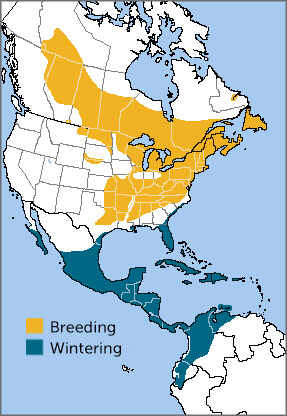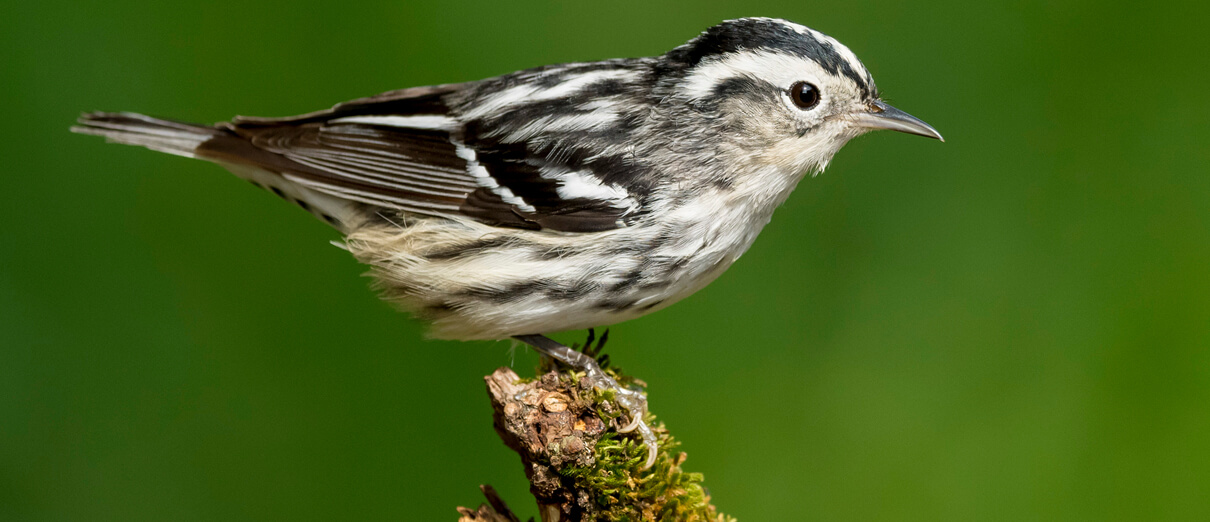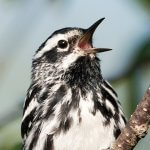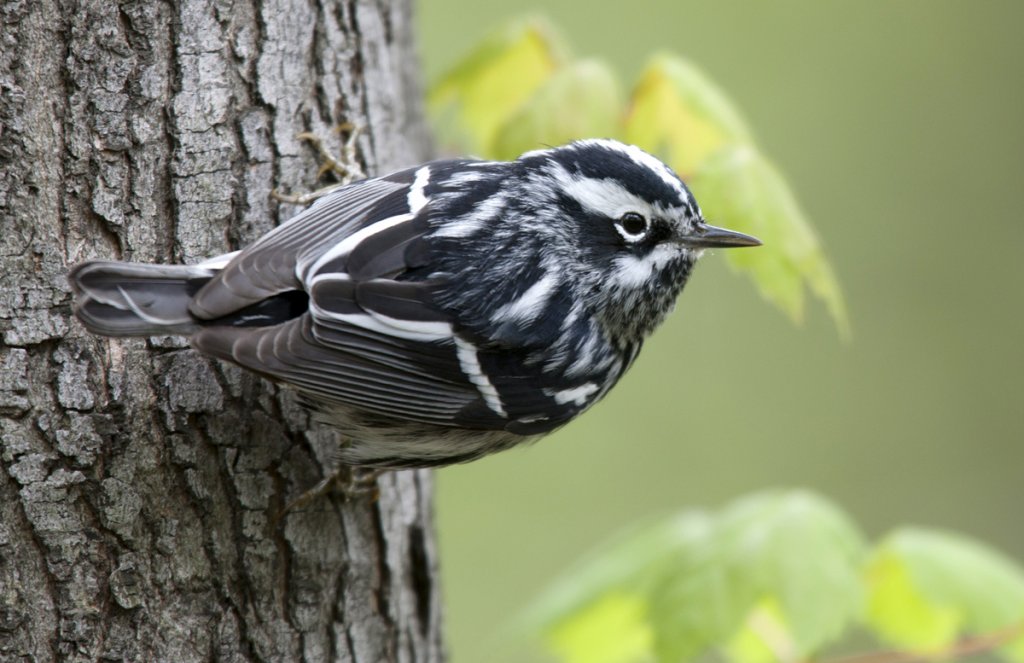
The song of the Black-and-white Warbler — reminiscent of a rusty wheel turning — is an early sign of spring. The zebra-striped Black-and-white is one of the first warblers to arrive on its breeding grounds, along with other "early bird" species such as the Louisiana Waterthrush and Yellow Warbler. It is the only member of its genus Mniotilta, which means “moss-plucking,” referring to this bird's habit of probing tree bark for insects and spiders.
The Black-and-white Warbler has adaptations unlike any other North American wood-warbler.
A One-of-a-Kind Warbler
The Black-and-white Warbler is often seen working its way up and down tree trunks and thick branches like a White-breasted Nuthatch or Brown Creeper, leading to colloquial names such as "black-and-white creeper" and "pied creeper.” Its rear toe is elongated and thicker than that of other wood-warblers to support its vertical foraging style, and its thin, slightly curved bill helps it probe into bark cracks and crevices for caterpillars, grubs, and other arthropods.
Many birdwatchers also refer to the Black-and-white Warbler as the "Zebra Warbler" for its monochrome, yet flashy, striped plumage. Males and females resemble one another, although females lack the males' black cheeks and throat. The male of a similar species, the Blackpoll Warbler, also has black-and-white stripes, but sports a solid black cap, migrates later in the spring, and lacks the creeper-like foraging style of the Black-and-white Warbler.
Long-Distance Migrant
Black-and-white Warblers breed as far north as northern Canada and winter as far south as northern South America. The breeding range extends from Canada's Northwest Territories to Newfoundland and Labrador, down through much of the eastern United States. These birds winter in the coastal southeastern United States, as well as throughout Central America, the West Indies, and northwestern South America, where ABC and its partners work to conserve habitat.
If you hear a squeaky wheel in the woods, look for a Black-and-white Warbler. Its memorable, easy-to-learn song is simple, repetitive, and high-pitched.
Listen here: Squeaky-wheel song:
(Audio: Aidan Place, XC567734. Accessible at www.xeno-canto.org/567734)
Early to Arrive and Early to Breed
These “early birds” return to their southernmost breeding territories in mid-March but show up at northern haunts by mid-May. Because they forage primarily on bark, they are less dependent on foliage than most wood-warblers. During courtship, the male chases potential mates throughout his territory, perching nearby and fluttering his wings. Sometimes the female leads him to the edge of his territory to observe him interacting with a neighboring male — perhaps to judge which one to choose as a mate. Once a pair is established, the birds will fly near the ground, where the female will pause at prospective nest sites. Nest-building begins as early as mid-April.

Black-and-white Warbler nests are usually built on the ground, well-hidden at the base of a tree, rock, stump, or fallen log, or under a bush. The nest is an open cup made of dry leaves, course grasses, pine needles, and rootlets, and lined with soft fibers. The female lays up to five eggs and incubates them alone, although her mate occasionally brings her food. The eggs hatch in less than two weeks, and both parents feed the nestlings. The young leave the nest eight to 12 days later. For the first few days, the fledglings can barely fly, and use their wings to scurry across the ground. Brown-headed Cowbirds commonly lay their eggs in Black-and-white Warbler nests, often to the detriment of the hosts' young.
The “Zebra Warbler”: Trending Downward
The Black-and-white Warbler is still common, though Breeding Bird Surveys indicate a gradual decline in population over the past 50 years. The biggest threat to this forest-dependent species is habitat loss, which also takes a toll on Cerulean, Kentucky, and Blackpoll Warblers. As nocturnal migrants, Black-and-white Warblers are frequent victims of collisions with glass, towers, and wind turbines; as insectivores, they are vulnerable to pesticide poisoning.

Help support ABC's conservation mission!
ABC is involved in a number of large-scale conservation initiatives that protect and recover habitat for this species on its breeding and wintering grounds, including BirdScapes and Joint Ventures. Wintering Black-and-white Warblers benefit from several areas protected by ABC and in-country partners, including Buenaventura Reserve in Ecuador and the El Paujil Reserve in Colombia.
ABC's Collisions program provides solutions to prevent bird collisions with glass, particularly at home windows, and we also work to halt or restrict the use of harmful pesticides.



















































